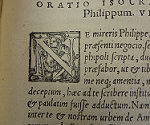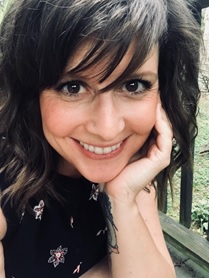Rigidity and Flexibility: The Dual Nature of Communicating Care for Vietnamese Agent Orange Victims
Tsze-chang asked Confucius about perfect virtue. Confucius said, “To be able to practice five things everywhere under heaven constitutes perfect virtue.” He begged to ask what they were, and was told, “Gravity, generosity of soul, sincerity, earnestness, and kindness.”–Analects XII.XI
Introduction
Communicating care is a complex endeavor, especially difficult for organizations with missions that center on the care of people with highly contested medical conditions like those related to Agent-Orange exposure. Communicating care for AO victims becomes particularly fraught in intercultural contexts where definitions, treatments, politics, and rhetorical practices differ or conflict, and when institutional challenges confound care and treatment protocols (Walton and Hopton 311).
What is Agent Orange?
Agent Orange is the nickname for the chemical combination of 2,4-D and 2,4,5-T, which, when combined, creates the toxic byproduct dioxin. Weaponized during the Vietnam War, Agent Orange was used by the U.S.to defoliate roughly 4.7 million acres of forest and crops. Highly effective, the spray campaign devastated forests and food chains, contaminated water and land resources, and resulted in death, disease, and multi-generational health defects for the Vietnamese and Americans exposed. Since 2007, the United States government has appropriated over $222 million to address the environmental and human health consequences attributed to Agent Orange in Vietnam, even as these consequences remain highly contested.
How the Rhetoric of Health & Medicine can Contribute to Intercultural Communication
The rhetoric of health and medicine (RHM) is an academic discipline that studies how language, materiality, and symbols affect the communication of scientific information. As a subfield of Rhetoric, RHM analyzes and evaluates the structure, delivery, and intention of messages, and investigates how stakeholders rhetorically negotiate “the intersections of healthcare communication, patient education, and evidence-based medicine” (Angeli and Johnson-Sheehan 1). From Foucault’s Birth of the Clinic to Rita Charon’s Narrative Medicine: Honoring Stories of Illness, RHM scholars investigate a range of patient and caregiver experiences, hoping to better understand how scientific, health and medical communication is accomplished (Malkowski, Scott, Keränen).
Though science can teach us much about how the body works and how disease works in and on bodies, it can teach us much less about how to use this knowledge to relieve the multiple sufferings activated by disease or dislocation from one’s family or community when no cure exists. Here, philosophy and rhetoric are more productive and, perhaps, even palliative.
Methods
We saw a kairotic moment for our research study created by recent U.S.-led environmental and health remediation and remuneration efforts, and the disparate understandings of effective community engagement apparent in those efforts. Studying what it means to communicate care to Agent Orange victims in Vietnam is a particularly useful case study for RHM and intercultural communication scholars to explore, because Agent Orange is one of the most discursively embattled concepts of the post-war era (Walton and Hopton 311).
Here, we share a subset of findings from an IRB-approved, 5-week qualitative field study in Vietnam in partnership with the Vietnam Association for Victims of Agent Orange (VAVA), a nonprofit humanitarian organization that advocates for people with medical conditions associated with Agent Orange/dioxin exposure.
VAVA
VAVA is the Vietnamese government-sanctioned nonprofit through which all aid to Agent Orange victims is mobilized, received, coordinated and distributed. During our study, we visited 11 provinces in northern and central Vietnam and interviewed people associated with VAVA at several levels of the organization to learn more about how the organization cares for and communicates care and scientific information to AO-dioxin victims. Our findings suggest that VAVA employed rigid (communication processes and norms that could not easily be changed or customized) and flexible (intentionally customizable communication processes and norms) systems to communicate and deliver care.
Rigid and Flexible Structures that Facilitated Care
Rigidity
The Vietnamese government designed VAVA as the sole, official advocating organization for Vietnamese Agent Orange victims, but VAVA representatives must coordinate with government officials at their respective levels (e.g., national, province, district, ward, village) to inform the government of its activities, request approval, and garner support. The government’s approval is essential for VAVA’s work, so VAVA is careful to coordinate its priorities and messages so its representatives convey a harmonized message to government officials. In cultivating clear channels of communication within and between the organization and the government, VAVA strengthens its capacity to intervene on behalf of Agent Orange victims:
We receive the concern and encouragement of local government so whatever we request or put in our strategy, the government approves it and encourages us to do it.
The government also officially designates someone as an Agent Orange victim. The Ministry of Health has identified 17 diseases believed to be associated with Agent Orange exposure, and, for a veteran to be eligible for government-funded assistance, the veteran must have proper paperwork showing a record of service in contaminated areas, as well as a medical diagnosis of at least one of the 17 diseases. One way VAVA supports its constituents is by educating them about relevant government policies and helping them to apply for assistance. VAVA explained to us that government designation as an Agent Orange victim is difficult and tedious but essential for not only official assistance (free medical care) but also recognition and honor within the local community. Thus, VAVA’s help navigating the rigid government designation process facilitates both medical and emotional care.
To retain its credibility with families, a particularly important caregiving unit in this cultural context, and its standing with the government, VAVA must work carefully to convey updated, accurate information about these government policies, paperwork, approvals, and resources. Official governmental information flows in a clear path from national headquarters to the province level, province to districts, districts to wards, and wards to rural villages. Each VAVA representative understands her or his place in this information flow. A rigid chain of communication helps ensure information reaches the widely dispersed representatives of VAVA, and it also mirrors the rigid, hierarchical structure common to many Vietnamese institutions:
VAVA and the government share a vertical system that functions and feels familiar to the society.
Organizational rigidity and formality meant we could not easily change itineraries or appointments with party leaders. To do so, or even attempt to do so, would have been perceived as disrespectful and inefficient. While frustrating to Western researchers, we realized that VAVA’s rigid, formal hierarchy was not only appropriate to facilitating care within the organization’s political and governmental context but was also the accepted and preferred communication strategy within the cultural and social context too.
Flexibility
Rigidity alone, however, was not a complete strategy. In explaining how communication works to facilitate caregiving, many VAVA representatives began by reciting detailed records of the organizational structure and the number of people served by or at various branches of the organization. In one province office, we sat across from a leader who recited these numbers (of organizational members, of chapters, of people served at each level) from memory while we observed directly behind him a corresponding wall chart validating the same information.
VAVA members explained that information flowing down the organization typically involved government policy information and organizational priorities (such as organizing events to draw recognition and support for Agent Orange victims), whereas information flowing up the organization reported on “needs and living standards” of affected families. The representative mentioned above could recite from memory not only the numbers of victims in his province, but also their names and could recall the stories of how AO-related complications affected or afflicted these individuals and their families. While it was mission-critical that VAVA quantified the extent of exposure and related disease, victims were far more than a number.
Over the course of our study, it became clear that the rigid, formalized structure of the organization was complementary to a flexible, customized care that VAVA representatives were committed (and enabled) to providing. For example, VAVA builds into its information flow regular reporting up the organizational hierarchy of each family’s needs and status. It also coordinates events in which veterans and affected families meet with high-level VAVA officials to convey their priorities and to influence the vision of the organization for the coming year. Even scientists working for VAVA explained their work is informed by the priorities of affected families. They coordinate regular meetings with affected families for the purpose of “listening to their desires.”
At lower levels of the organization, there may be only a few association members, many of them with affected family members themselves. So those serving at village and even ward levels are often intimately connected to the families they serve and familiar with the care they seek. Care for these clients was also flexibly defined: securing a water buffalo for a farmer, procuring a computer for a young victim who wanted to work in computing, and building a house for a man who was about to die so his soul didn’t wander after death (Walton and Hopton 317).
Even high-level organizational members provided direct caregiving through personal, customized visits, and it was VAVA’s formalized reporting structure that triggered these visits. For example, one leader at the province level (immediately below national headquarter level) explained that he reviewed reports from all districts within his province (each of which was divided into wards, totaling 584 wards!). Based on these reports, he went to visit specific families who were experiencing particularly tough times due to disease complications. During these visits, he would explain government policies, but, first, he would “greet them and listen to their stories.” This particular leader clearly understood the catharsis that often attends personal narrative, but such caregiving was not prescribed; it wasn’t even part of his essential job duties. He was reading his audience and delivering culturally appropriate care at the moment of need, and he was empowered by the rigid organizational structure to do so.
Illustrating further flexibility and customization facilitated by VAVA’s hierarchical structure is the wide range of forms care takes. For example, although all Vietnamese affected by Agent Orange exposure (including second and third generation descendants with qualifying conditions) may officially qualify for government assistance, resources are limited. VAVA explained that typically only veterans receive any government service. Thus, in geographic areas with still-surviving veterans, VAVA’s caretaking focuses on educating families about these services and helping them to apply for relief. In other regions, affected families may no longer include veterans but contain a majority of much younger people whose needs for care are, in some ways, much different:
When we talk to the family, we find that some of the children with Agent Orange, they have mental problems and intellectual problems, so they cannot go to school. They stay at home alone: no friend, no nothing [sic]. We want to give them a new thing in their life and some fun and give vocational training and fun and games. And we teach them living skills.
The VAVA representatives in this area founded a center for children to provide training in job skills and life skills, as well as to broaden the social experience of affected children, all of which falls outside traditional concepts of medical care, but are clearly in-bounds for care more broadly interpreted. These kinds of care proved incredibly useful for local families, so much so that VAVA representatives shared this model with chapters in other regions that served similar populations. In this example, we see both flexibility and rigidity facilitating caregiving. VAVA representatives had the leeway to listen to the particular needs of the families they served and to develop a new strategy for caregiving (flexibility). The organization’s excellent recordkeeping and reporting structure (rigidity) then enabled it to identify promising locations for replicating successful caregiving approaches in other areas.
Conclusions: Context as Prescription
On the one hand, VAVA representatives embraced a rigid, top-down structure they said was essential for coordinating unified messages and goals across the organization. This emphasis on respect for authority, quantification, and harmony of message was not only practically useful in a widely distributed organization like VAVA, but also culturally and politically appropriate—a requirement for operating within most Vietnamese communities and communicative contexts.
At the same time, however, VAVA representatives conveyed deep respect for victims’ ability to know their own needs and prioritize the kind of care they desired. While VAVA’s national leadership set the organizational vision, specific communities and families drove the enactment of that vision. Thus, we saw communication of care that was neither top-down nor bottom-up but circular, fluid, and in surprising ways feminist and reminiscent of Gilligan’s ethic of care (3).
This finding is not terribly surprising when one considers the similarities between Gilligan’s ethic of care and the Confucian concept of Jen, defined as human-heartedness; the thing that makes man human (Li 71; For an extended conversation on Confucianism’s influence on Vietnamese culture and an exploration of the concepts of jen and others, see “All Men are Brothers” in Technical Communication 2018 and “One Word of Heart,” Technical Communication Quarterly 2019). But what was surprising—at least to us—was the way the organization balanced and employed rigidity and flexibility, traditional and nontraditional concepts of technical and scientific communication, in order to communicate information, thus delivering the highest level of care. Though Gilligan’s ethic of care has been criticized for its gender dependence, essentialism, and particularism (Okano 86), we saw its power and pragmatism at work in this particular context.
As Hunsinger (1) and Agboka argue, there is no “simple, monolithic compass” (169) by which to understand culture, or the ways culture and context affects the delivery of care. Clearly though, care in this context, was as much a rhetorical and cultural construction as it was the relief experienced after adhering to medical prescription. We contend the communication of scientific and medical information is important when communicating care, but rhetors must also awaken to the philosophies, norms, and narratives that influence a patient’s experience of feeling cared for, even—and perhaps especially—in the absence of remedy or cure.
Centering this kind of rhetorical care at the heart of our communicative practices may require reconsideration of what it means to practice technical communication in intercultural contexts. We may need to rethink our field’s commitments to benefits of scientific certainty, agonism, and even language as the best or primary means of communication (Warren and Weis 125). Endorsing such a messy definition or practice of technical communication may necessitate an abandonment of any notion that RMH is a set of reproducible norms and conventions practiced universally by experts.
Instead, the most effective scientific communication might look like singing a song about not eating fish from a contaminated river to a patient with limited cognitive aptitude; or it might look like building a house for a dying man so his soul won’t wander. What our experience showed us is that communicating care in context requires a relentless engagement with stakeholders in context and a sophisticated understanding of the way ethics, history, sociology, politics and science affect one’s ability to experience feeling cared for.
Thus, we resist prescriptions or generalized applications except to say that where practitioners observe and respond to the communicative requirements of their immediate context and practice a rhetoric animated by the relief of burden, hurt, and human suffering, they are communicating care in context.
Works Cited
- Agboka, Godwin. “Liberating Intercultural Technical Communication from ‘Large Culture’ Ideologies: Constructing Culture Discursively.” Journal of Technical Writing and Communication, vol. 42, no. 2, 2012, pp. 159–181., doi:10.2190/tw.42.2.e.
- Angeli, Elizabeth L., and Richard Johnson-Sheehan. “Introduction to the Special Issue: Medical Humanities and/or the Rhetoric of Health and Medicine.” Technical Communication Quarterly, vol. 27, no. 1, 2017, pp. 1–6., doi:10.1080/10572252.2018.1399746.
- French, Warren, and Alexander Weis. “An Ethics of Care or an Ethics of Justice.” Business Challenging Business Ethics: New Instruments for Coping with Diversity in International Business. Springer, Dordrecht, 2000, pp. 125–136.
- Gilligan, Carol. In a Different Voice: Psychological Theory and Women’s Development. Harvard University Press, 2016.
- Hunsinger, R. Peter. “Culture and Cultural Identity in Intercultural Technical Communication.” Technical Communication Quarterly, vol. 15, no. 1, 2006, pp. 31–48., doi:10.1207/s15427625tcq1501_4.
- Li, Chenyang. “The Confucian Concept of Jen and the Feminist Ethics of Care: A Comparative Study.” Hypatia, vol. 9, no. 1, 1994, pp. 70–89, doi:10.1111/j.1527-2001.1994.tb00110.x.
- Malkowski, Jennifer et al. “Rhetorical Approaches to Health and Medicine.” Oxford Research Encyclopedia of Communication, 22 Dec. 2016, oxfordre.com/communication/view/10.1093/acrefore/9780190228613.001.0001/acrefore-9780190228613-e-180. Accessed 10 Jan. 2019.
- Okano, Yayo. “Why Has the Ethics of Care Become an Issue of Global Concern?” International Journal of Japanese Sociology, vol. 25, no. 1, 2016, pp. 85–99., doi:10.1111/ijjs.12048.
- Walton, Rebecca, and Sarah Beth Hopton. “‘All Vietnamese Men Are Brothers’: Rhetorical Strategies and Community Engagement Practices Used to Support Victims of Agent Orange.” Technical Communication, vol. 65, no. 3, 2018, pp. 309–325.
- World Health Organization. “Dioxins and Their Effects on Human Health.” Fact Sheets, 4 Oct. 2016, https//:www.who.int/news-room/fact-sheets/detail/dioxins-and-their-effects-on-human-health. Accessed 24 June 2019.
Keywords: social justice, dioxin, intercultural communication
Cover Image Credit:




 Sarah Beth Hopton is an Assistant Professor at Appalachian State University in Boone, North Carolina where she teaches Technical & Professional Writing and directs the English Department’s internship program. Her technical communication scholarship focuses on the intersections between technology, sustainability and social justice. Her research has appeared in Kairos, Technical Communication Quarterly, Technical Communication, and Communication Design Quarterly.
Sarah Beth Hopton is an Assistant Professor at Appalachian State University in Boone, North Carolina where she teaches Technical & Professional Writing and directs the English Department’s internship program. Her technical communication scholarship focuses on the intersections between technology, sustainability and social justice. Her research has appeared in Kairos, Technical Communication Quarterly, Technical Communication, and Communication Design Quarterly.  Dr. Rebecca Walton is an associate professor of technical communication and rhetoric at Utah State University and the editor of Technical Communication Quarterly. Her research interests include social justice, human dignity and human rights, and qualitative methods for cross-cultural research. Her co-authored work has won multiple national awards, including the 2018 CCCC Best Article on Philosophy or Theory of Technical or Scientific Communication, the 2016 and 2017 Nell Ann Pickett Award, and the 2017 STC Distinguished Article Award.
Dr. Rebecca Walton is an associate professor of technical communication and rhetoric at Utah State University and the editor of Technical Communication Quarterly. Her research interests include social justice, human dignity and human rights, and qualitative methods for cross-cultural research. Her co-authored work has won multiple national awards, including the 2018 CCCC Best Article on Philosophy or Theory of Technical or Scientific Communication, the 2016 and 2017 Nell Ann Pickett Award, and the 2017 STC Distinguished Article Award.